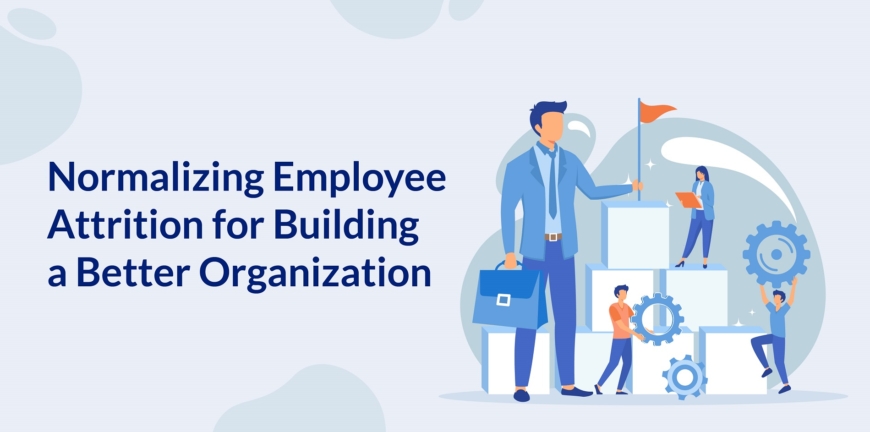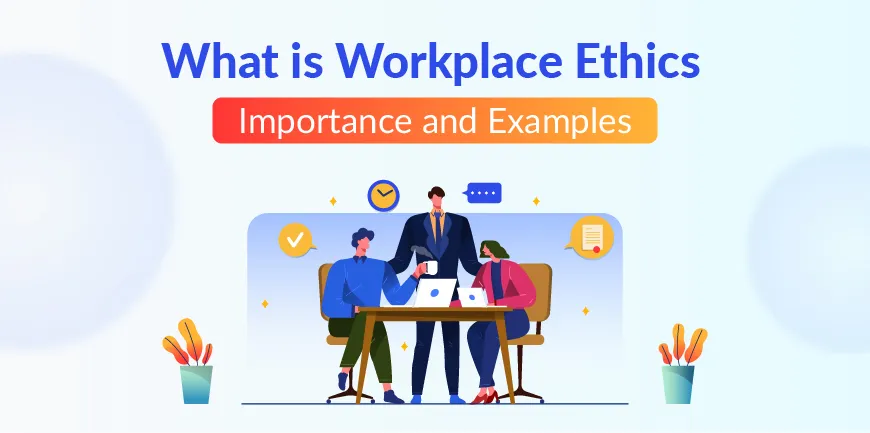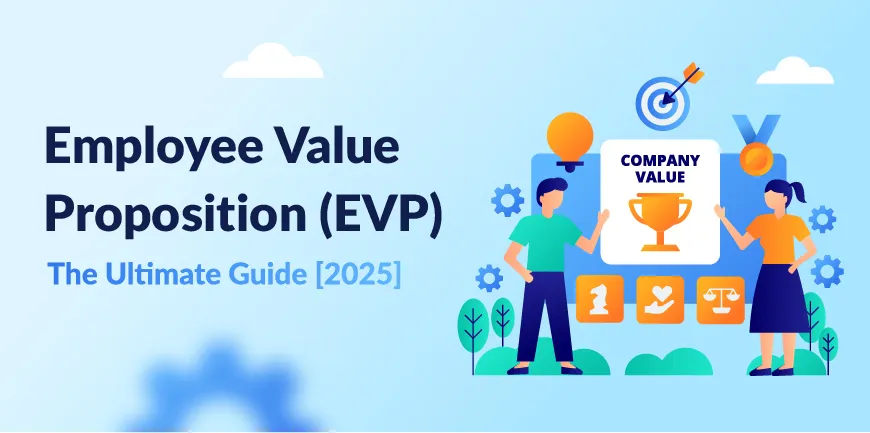
Data-Driven Recruitment: What It Is and How to Use It for Hiring Success
11/04/2023
Normalizing Employee Attrition to Build a Better Organization
09/05/2023The onset of the Great Resignation in 2022 saw significant economic uncertainty. Despite this, in 2023, around 46% of the American workforce wanted to switch jobs, bringing job hopping and talent retention issues to the forefront, making it a primary concern in the professional world.
Flexible work hours, better compensation and benefits, and work-life balance are some of the main perks employees expect from their jobs. While you may be able to provide them with all the above, not communicating these effectively with your potential candidates/employees results in them looking for work elsewhere or leaving your company in search of better job prospects. Employee Value Proposition (EVP) is one of the significant aspects of talent acquisition.
What is Employee Value Proposition (EVP)?
An employee value proposition is typically the value an employer provides its workers, the right combination of benefits and rewards presented/proposed for performing well in their job roles.
But to stand out, you need to look beyond these material aspects, as any employer would be ready to compete for those. Companies need to focus on fostering a great company culture. In addition to the material benefits, they must also provide employees opportunities to grow, connect with the community, and find meaning and purpose in their professional growth.
Having the right EVP in place helps you attract potential new talent and retain your best employees.
What is the Best Approach Towards Creating the Perfect EVP?
A systematic approach is what you need to strike the right balance between the material and immaterial benefits of a value proposition. A sound approach to creating the right Employee Value Proposition is to treat the factors independently, as it is the only way to make constructive collaboration happen.
A classic example of the success of this approach was seen in the company Best Buy after Hubert Joly became its CEO in 2012. He had intentionally put up a motto of “enriching customers’ lives through technology”.
In a recent Forbes article, he recalled, “We achieved this turnaround by pursuing a noble purpose and treating profit as an outcome, not a goal.” He mentioned a significant observation he made that when the fitting purpose aligns with employees’ search for meaning, it creates magic, giving rise to employees being more focused on customer satisfaction. Of course, Joly included materialistic rewards but did not cut out staff or wages. Rather, along with purpose, he also invested in culture and training, which helped turn around the company.
Why is it necessary to have a Strong Employee Value Proposition?
A recent Gartner report revealed that companies with robust EVPs have the potential to retain their best workers and increase the possibility of commitment of new hires by around 30%. It also meant they could drastically reduce the employee turnover rate by 70%, creating a win-win situation for the organization. A good EVP can help strengthen employer branding and make the brand stand out in the marketplace.
EVPs are also great facilitators for accelerating marketing efforts in general, meaning when clients notice how happy your employees are, they will be more inclined to work with you.
What are the Principal Sections a Good EVP must Possess?
An EVP conveys to prospective employees what you will be offering, so get into the details. The five major parts of an appealing EVP must include are-
1. Compensation
In 2022, 33% of job seekers refused to follow through to the interview stage without knowing the salary range offered by the company. There is no need to give them a set, affirmative number. A compensation range would suffice, as it tells employees what they are in for. A general list would include the following-
- Annual salary range
- Raises and promotional policies
- Bonuses
- Fair and inclusive compensation policy
- Severance and hazard pay
2. Perks and Benefits
According to a Glassdoor survey, 60% of respondents mentioned they value perks and benefits when accepting a job. Including Employee benefits is necessary, as they are a significant part of a strong Employee Value Proposition. Some of the Benefits and rewards may include-
- Medical Insurance
- Sick leave
- Parental leave
- Pension and stock options
- Childcare etc.
3. Career Development Opportunities
A Gallup poll found that 57% of respondents were keen on training and development opportunities that upgraded or taught them new skills. Providing employees opportunities to upskill shows that employers support them in their careers.
Some of the career development opportunities could be
- Training and Education
- Certification programs
- Coaching opportunities
- Educational stipend
4. Company Culture
So far, we have discussed the tangible benefits. But the intangible benefits are what will set your company apart. A company’s culture is defined by how it treats and values its employees and their interaction with the outside world.
Some aspects to pay attention to elevate your company culture and express to prospective employees:
- Hybrid and remote work opportunities
- Flexible hours
- Management styles
- Collaboration and teamwork values
- Diversity and inclusion statements
- Employee well-being events
5. Other Benefits
Go the extra mile to impact a worker’s well-being. Include benefits that make them feel at home.
Extra perks could include:
- On-site yoga, meditation, and mindfulness classes
- Wellness stipends
- Reimbursements on gym memberships
- Napping and meditation rooms
- Catered lunches or food stipends
- On-site health services
- Company car
- Discounts on company products and services
How to Create the Perfect EVP (Employee Value Proposition) to Attract Talent?
An approach that is in vogue for creating a strong EVP includes specific steps:
1. Assessing Your Company’s Assets and the Employees’ Needs
Supply and demand it is! Know about your company’s needs by collecting information on what they are providing employees concerning the four factors and how employees are experiencing them. What we meant when we said to collect information is to conduct surveys, collect data, and examine employee engagement, not just by focusing on the scores, but by investigating the reasons for changes that happen. For example, a higher score in intent to leave the organization may be because of a lack of growth opportunities or feeling disconnected from colleagues. Every cause needs diverse ways of handling.
2. Do Not Ponder on the “Why”!
After gathering the data on what your company is offering and how the employees are receiving it, ensure that your managers and their reports are discussing the EVP in an integrated way. Being in tune with the reports and not over-analysing the “why” will reduce disagreements. At the time of the announcement, remember to explain how the policy will benefit them over the short and long term.
Repetition and consistency are critical when you are out to change mindsets. Keep a structured conversation about the factors when-
Recruiting and onboarding- During the interview, do not just ask about your candidate’s expectations, but also be clear on the rewards and benefits you are offering them. It can help determine if the candidate’s needs align with your offer. By examining the underlying advantages of your employee value proposition, you can draft a better offer that will give you an edge over your competitors.
Managing Performance- You need to measure all the factors here. Form assessments around questions that will nudge employees into thinking more broadly about the nature of their work: How is my work contributing to the organization’s purpose? What am I doing to build better relationships with my employees and motivate my team? What am I doing to ensure the delivery of top-notch results? Compelling candidates to Implore these questions can help you in building an inclusive employee value proposition.
Adjustment of policies- Whenever you introduce a new policy or update your current policy, note how the four factors could be affected by this change.
Apple faced massive backlash due to a similar issue with its employees several years ago, when they mandated work three days a week in the office. According to National Public Radio, “they did not retrieve the plan until around 1000 workers signed a letter saying the method was inefficient, inflexible, and a waste of time.”
3. Constantly Update
Employees need to change from time to time. You must reassess regularly to keep up with their dynamic needs. Collecting data annually is enough for most companies, but those expanding or looking forward to major mergers or acquisitions may want to do it more often. Constant Evaluation of how relationships change among the factors in the system is critical.
In Conclusion
A holistic and individualized approach that includes specific rules and a particular system will help accelerate your employee attraction and retention efforts. It will help tackle the issues of competency tensions between managers and their reports. In the long run, it will facilitate your organization to move beyond “reacting to immediate demands of workers” to creating a surrounding that unleashes employees’ maximum potential, which is the key to building a long-lasting, successful organization.
Contact Us For Business Enquiry

Rajkumar Shanmugam
Rajkumar Shanmugam is the Head of HR at ALP Consulting, bringing over 19 years of comprehensive HR leadership experience across India and international markets. His expertise spans talent acquisition, employee relations, performance management, compliance, and HR transformation. Rajkumar has a proven track record of driving people-centric initiatives, enhancing workplace culture, and aligning HR strategy with business goals. With extensive experience in US staffing operations and global mobility, he continues to lead organizational excellence through innovation and employee engagement.




